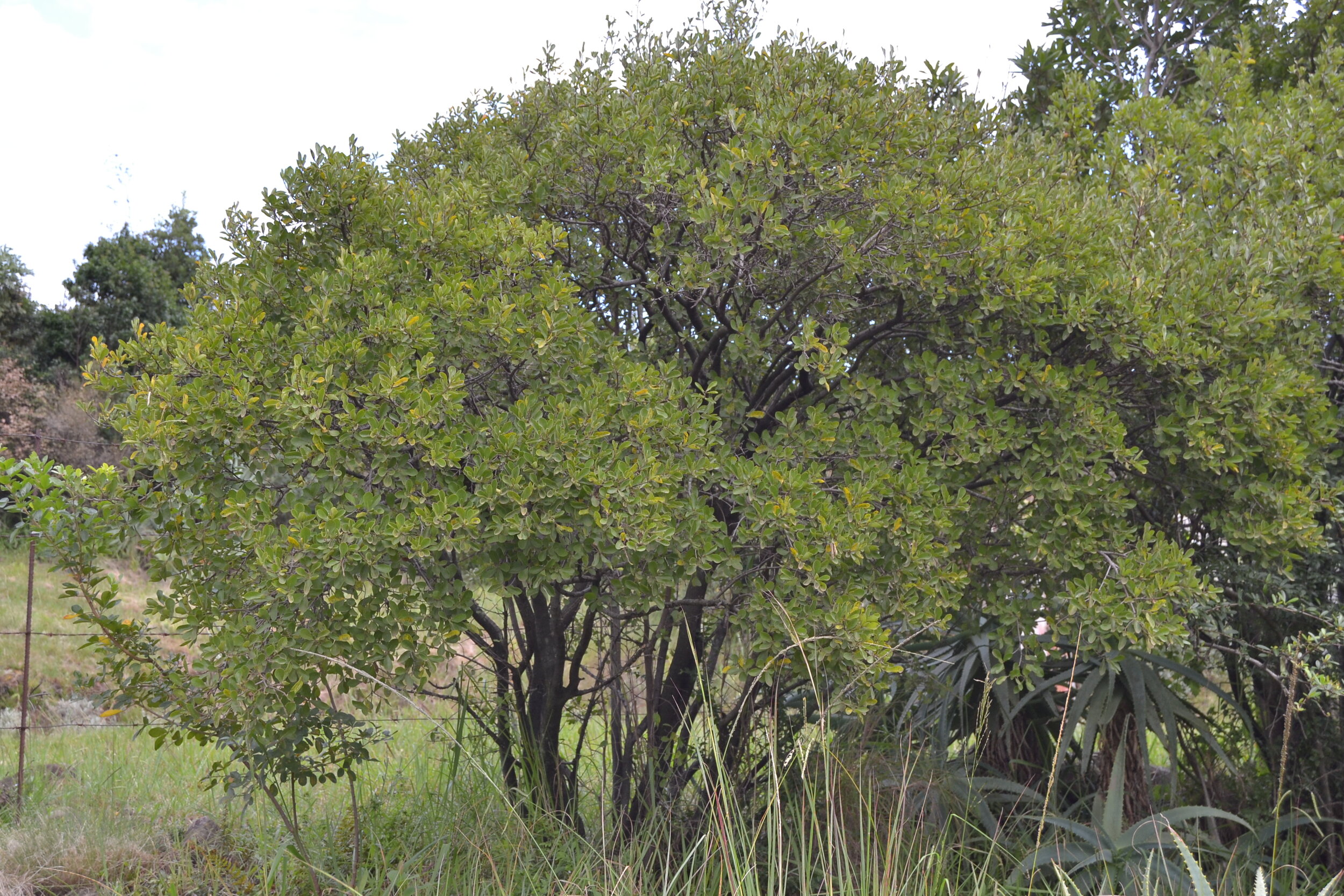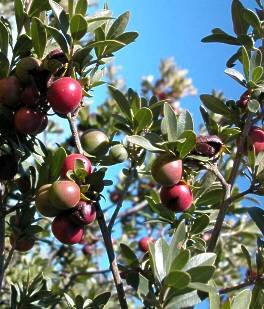Most gardens require screening in some form whether it be screening from neighbouring properties or screening of unsightly items such as rainwater tanks or the compost heap. Screening is also the layer of shrubs that can be planted along your boundary wall to soften it and create that backdrop of foliage that adds visual beauty to a garden. I also like using shrubs where space needs to be filled up, for example an empty corner is often a great spot for a screening shrub with colourful planting below.
Here are some beautiful screening shrub options:
Plant Information taken from either http://pza.sanbi.org/ and/or https://www.randomharvest.co.za/ and/or https://kumbulanursery.co.za/
1. Polygala myrtifolia (September Bush)
Polygala myrtifolia is a common, evergreen, widespread pioneer shrub with pretty mauve flowers on and off throughout the year with a peak in spring, hence the names Augustusbossie and September bush. All polygalas also have a showy, and very distinctive brush-like tuft on the keel. The showy petals, beautifully marked with darker veins, are usually in shades of mauve or purple, but can also be pink scarlet, or white. The fruit is a small, winged capsule. Polygala myrtifolia is an attractive evergreen shrub able to adapt to most gardens and gardeners. A tough shrub suitable for low maintenance and water-wise gardens. In the new garden it is excellent as a fast growing windbreak, hedge and colourful shrub able to grow in most soil types from full sun to semi-shade. Size 1 to 3m.
Polygala myrtifolia
2. Maytenus bachmannii (Willow Koko Tree)
Maytenus bachmannii is a very pretty evergreen shrub with small, narrow leaves that have pink stalks.
It bears abundant, small, white flowers that have pink stalks from January to March and attract insects to the garden. It then bears red berries for most of the year.
This is a well-shaped, excellent garden plant that can be pruned to make a stunning small hedge or topiary. Plant in sun or semi-shade in compost rich soil. Size 1 to 3m
Maytenus bachmannii
3. Diospyros lycioides (Blue Bush)
Diospyros lycioides is a very hardy, deciduous, drought resistant, fast growing shrub or small tree. This exciting shrub or small tree is a very tough plant which grows well country-wide. Its most attractive features are its smooth bark, blue-green leaves, fragrant flowers and colourful fruits that attract many birds and insects.
It bears sweetly scented, white, bell-shaped flowers from September to December that attract butterflies and other insects. The edible berries are large, red and decorative and also attract birds. As with all Diospyros spp. sexes are on separate plants, therefore only female plants bear fruit. Plant in sun or semi-shade. Makes a beautiful small tree when pruned as a standard. It grows well in rocky areas. Twigs traditionally used for toothbrushes and all parts are used medicinally. Size 2 - 7m.
Diospyros lycioides
4. Halleria elliptica (Rock Tree- Fuschia)
An excellent medium-sized shrub or small tree, that fits well into both large gardens planted in groups and smaller gardens used singularly. Halleria elliptica is best suited to semi-shaded and shaded areas, in any type of soil. Hardy, adaptable and very versatile, they can be used as specimen plants or in mixed plantings. As part of a shrubbery, it will provide colourful vibrancy when in flower. It tolerates some morning or afternoon sun, and can be used in full or dappled shade, even doing well planted under trees. Halleria elliptica is valuable in horticultural due to its versatility, pretty fuchsia-like flowers and attractiveness to both nectar- and fruit-eating birds, as well as many insects.
The fleshy fruits are edible and taste sweet, although they tend to dry the mouth out. They are ripe and juicy when black in colour. Fruits can be eaten fresh or stored for a while, consumed raw, or made into a jelly/jam. The common names tree-fuchsia and wild-fuchsia come from the plant’s fuchsia-like flowers and the Afrikaans common name, kinderbessie, meaning 'children's berry', is related to how much children enjoy the taste of the fruits.
A relative of Halleria ellpitica is H. lucida, which has medicinal, traditional, spiritual and construction uses, particularly for the Zulus. Halleria elliptica grows in the Western Cape and being so much smaller and more shrub-like, it was not utilized as much in these traditional ways.
Halleria elliptica
5. Clerodendrum myricoides (Blue Cat’s Whiskers)
Rotheca myricoides (= Clerodendrum myricoides) is a fairly hardy, medium sized, evergreen, very decorative shrub with beautiful foliage. It has massed spikes of purple flowers in spring and summer which attract the beautiful Carpenter Bees. The edible fruit attracts birds to the garden. Plant in sun or semi-shade in well-composted soil. Prune regularly to encourage it to bush out and keep producing flowers. A beautiful shrub for small gardens and containers. Size 2 to 3m
Clerodendron myricoides







